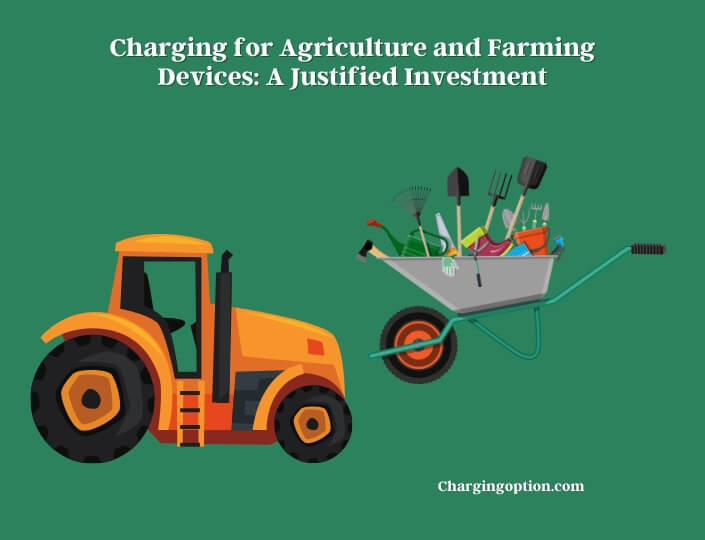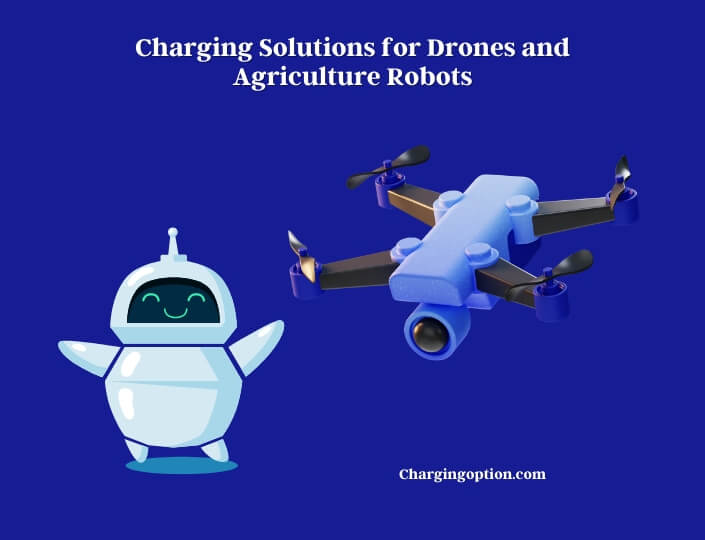Agriculture has always been a crucial aspect of human life, providing food, clothing, and other essential resources. Over the years, the agriculture industry has undergone tremendous changes, with technological advancements playing a significant role in improving efficiency, productivity, and profitability in farming practices.

In recent times, there has been a growing trend of technology adoption in agriculture and farming practices, with the introduction of various devices aimed at improving yields and reducing production costs. These devices range from simple handheld tools to complex technology-driven devices such as drones, sensors, and GPS-guided tractors.
Types of Agriculture and Farming Devices
There are various types of agriculture and farming devices that are currently being used in the industry. These devices are aimed at increasing productivity, improving efficiency, and reducing production costs. Some of the most common types of agriculture and farming devices include:
Precision Agriculture Tools
These tools use sensors and GPS technology to provide accurate information on soil moisture, nutrient levels, and crop health. This information is used to make data-driven decisions on planting, fertilization, and irrigation, resulting in increased yields and reduced costs.
Drones
Drones are unmanned aerial vehicles that can be used to monitor crop health, survey land, and spray crops. They are equipped with high-resolution cameras and sensors that can provide real-time data on crop health, pests, and irrigation needs.
Sensors
Sensors are small devices that can be placed on crops or in the soil to monitor temperature, humidity, soil moisture, and other environmental factors. This data is used to optimize irrigation and fertilization, resulting in increased yields and reduced water and fertilizer usage.
GPS-Guided Tractors
These tractors use GPS technology to accurately guide the tractor through the field, resulting in reduced overlap, reduced fuel usage, and improved efficiency.
Automated Milking Systems
These systems use robots to milk cows, resulting in increased efficiency and reduced labor costs.
Each of these devices has its unique benefits and can significantly improve farming practices. However, the cost of investing in these devices can be high, which raises questions about the potential return on investment.
Cost of Investing in Agriculture and Farming Devices
Investing in agriculture and farming devices can be costly, and it is essential to consider the potential return on investment. The cost of investing in these devices can vary significantly, depending on the type of device, the size of the farm, and the complexity of the technology. Some of the costs associated with investing in agriculture and farming devices include:
Equipment Costs
The cost of purchasing the equipment, including the device itself and any necessary accessories, can be significant.
Installation Costs
Installing some devices, such as precision agriculture tools, may require specialized installation and setup, which can be costly.
Maintenance Costs
Like any equipment, agriculture and farming devices require regular maintenance to ensure optimal performance. This includes software updates, hardware repairs, and replacement parts.
Training Costs
Using new technology in farming practices may require specialized training, which can be costly.
Data Management Costs
Data generated by agriculture and farming devices need to be stored, managed, and analyzed, which may require specialized software or services.
The Justification for Charging for Agriculture and Farming Devices
The justification for charging for agriculture and farming devices lies in the potential benefits that they can provide to farmers. These devices are designed to improve productivity, efficiency, and profitability in farming practices, and their adoption can result in significant returns on investment. Here are some reasons why charging for agriculture and farming devices can be justified:
Research and Development Costs
Developing new agriculture and farming devices can be a costly process, requiring significant investment in research and development. Charging for these devices helps to offset these costs and incentivizes technology providers to continue developing new and innovative products.
Improved Farming Practices
Agriculture and farming devices are designed to improve farming practices, resulting in increased yields, reduced costs, and improved sustainability. Farmers who adopt these devices can benefit from improved profitability and long-term sustainability, which justifies the cost of investment.
Increased Efficiency
Agriculture and farming devices can improve efficiency in farming practices, resulting in reduced labor costs and increased productivity. This increased efficiency justifies the cost of investment in these devices.
Customized Solutions
Agriculture and farming devices are often customized to meet the unique needs of farmers, taking into account factors such as the size of the farm, the type of crops grown, and the climate. These customized solutions can improve the effectiveness of farming practices, justifying the cost of investment in these devices.
Potential Returns on Investment
Investing in agriculture and farming devices can result in significant returns on investment, with increased productivity and reduced costs resulting in improved profitability. The potential returns on investment justify the cost of investing in these devices.
Charging Solutions for Tractors and Farm Equipment
Tractors and other farm equipment are essential tools for farmers, but they can also be costly investments. To help farmers access this equipment, several charging solutions are available. Here are some examples:
Leasing
Leasing allows farmers to access tractors and other farm equipment without having to make a significant upfront investment. Leasing agreements typically involve a fixed monthly payment, which can make it easier for farmers to budget for the equipment. At the end of the lease term, the equipment is returned to the leasing company, and the farmer can either renew the lease or upgrade to newer equipment.
Renting
Renting is another option for farmers who need access to tractors and other farm equipment but do not want to make a long-term investment. Renting involves paying a fixed fee for a set period, such as a day, week, or month. Renting can be a cost-effective solution for farmers who only need equipment for short periods or who want to try out different types of equipment before making a purchase.
Financing
Financing allows farmers to spread the cost of a tractor or other farm equipment over an extended period, typically several years. Financing involves taking out a loan, which is used to purchase the equipment. The farmer then makes regular payments on the loan, typically monthly, until the loan is paid off. Financing can be a good option for farmers who want to own their equipment but do not have the cash to make a large upfront payment.
Government Subsidies
In some countries, governments offer subsidies or grants to farmers to help them purchase tractors and other farm equipment. These subsidies can significantly reduce the cost of purchasing equipment and make it more accessible for small farmers.
Manufacturer Financing
Some tractor and farm equipment manufacturers offer financing options for their products. These financing options can include low-interest loans or extended payment terms, making it easier for farmers to purchase equipment.
Charging Solutions for Drones and Agriculture Robots
Drones and agriculture robots are becoming increasingly popular in the agricultural industry due to their ability to improve efficiency and productivity. However, investing in these technologies can also be costly. To help farmers access these technologies, several charging solutions are available. Here are some examples:

Leasing: Leasing allows farmers to access drones and agriculture robots without having to make a significant upfront investment. Leasing agreements typically involve a fixed monthly payment, which can make it easier for farmers to budget for the equipment. At the end of the lease term, the equipment is returned to the leasing company, and the farmer can either renew the lease or upgrade to newer equipment.
Pay-per-use: Pay-per-use models allow farmers to pay only for the services that they use. For example, a farmer could pay for a drone to survey their fields only when they need it, rather than owning and maintaining a drone themselves. This model can be particularly useful for farmers who only need occasional access to this technology.
Financing: Financing allows farmers to spread the cost of a drone or agriculture robot over an extended period, typically several years. Financing involves taking out a loan, which is used to purchase the equipment.
The farmer then makes regular payments on the loan, typically monthly, until the loan is paid off. Financing can be a good option for farmers who want to own their equipment but do not have the cash to make a large upfront payment.
Government subsidies: In some countries, governments offer subsidies or grants to farmers to help them purchase drones and agriculture robots. These subsidies can significantly reduce the cost of purchasing equipment and make it more accessible for small farmers.
Manufacturer financing: Some drone and agriculture robot manufacturers offer financing options for their products. These financing options can include low-interest loans or extended payment terms, making it easier for farmers to purchase equipment.
Conclusion
Agriculture and farming devices can provide significant benefits to farmers, including increased productivity, efficiency, and profitability. Investing in these devices can also be challenging, with costs and technological limitations that must be considered.
Charging for agriculture and farming devices can be justified by the potential benefits that they provide, including improved farming practices, increased efficiency, and potential returns on investment. This approach also presents challenges such as affordability, unequal access, limited scalability, limited adoption, and maintenance and support costs.
To ensure that agriculture and farming devices are accessible, affordable, and effective for all farmers, policymakers and technology providers must work together to address these challenges. This may involve developing new financing models that make these devices more affordable for small farmers or providing technical support and training to ensure that farmers can make the most of their investments.
Working together, we can ensure that agriculture and farming devices reach their full potential and help to create a more sustainable and prosperous future for farmers around the world.
Relevant Resources:
